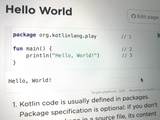Weekend hack: Kotlin Symbol Processing Maven Plugin
KSP only works with Gradle, leaving Maven users out in the cold. I built ksp-maven-plugin to fix that - minimal setup, auto-discovers processors, integrates with Maven’s lifecycle. Now you can use KSP-powered libraries like Room, Moshi, and Dagger in your Maven projects.


